Annapurna Circuit Trek
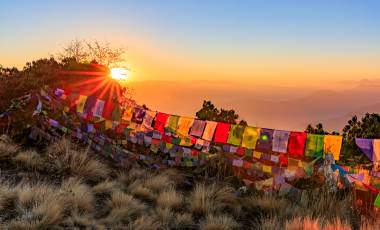
Everest Base Camp Trek
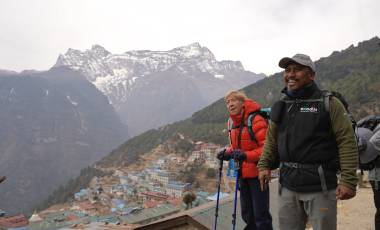
Peaks of Ladakh Trek
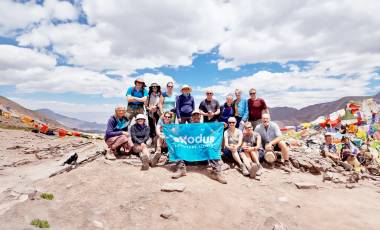
Annapurna Sanctuary Trek
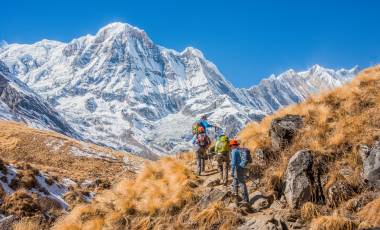
Shape your adventure: With Extensions, every beginning and ending is yours to create. Learn More.
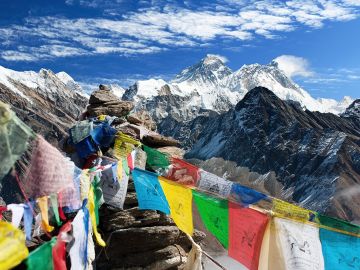
Read time – 4 minutes
The mighty Himalaya are incredible, rocky spires reaching for the vast blue sky, capped in snow which reflects the light brilliantly. The air here is clean and pure, the vistas captivating, and the culture friendly and fascinating. Many have been known to find true serenity in this extreme environment.
The Himalaya is a vast range, covering several different regions. Our two most popular Himalayan destinations are Nepal and Ladakh… but which is best for you?
That’s where our handy guide comes in as we cover the major similarities and differences between trekking in the Nepali and the Ladakhi Himalaya, so you can figure out which is right for you.
Here’s the good news: if you want high-altitude trekking through stunning, towering mountain landscapes while experiencing the hospitality of Tibetan Buddhist cultures, then either of these destinations is ideal for you.
Both offer a range of climbing treks of varying grade, duration, altitude and technicality so chances are you’ll be able to find one to suit your experience and fitness level. So how do you choose?
There are five crucial things you should mull over when choosing between Nepal and Ladakh.
While it’s surely true that both Nepal and Ladakh are jaw-dropping mountain wildernesses, there are noticeable distinctions in the scenery.
Ladakh is a stark, remote place, a high-altitude desert which seldom sees the monsoon that other parts of India and the Himalaya do. Plantlife is largely constrained to the valley floors, above which looms an almost alien landscape of vast plateaux, towering rock cathedrals and distinctive multi-coloured formations – a geologists dream!
There’s a true quiet here, a sense of another world high in the clouds.
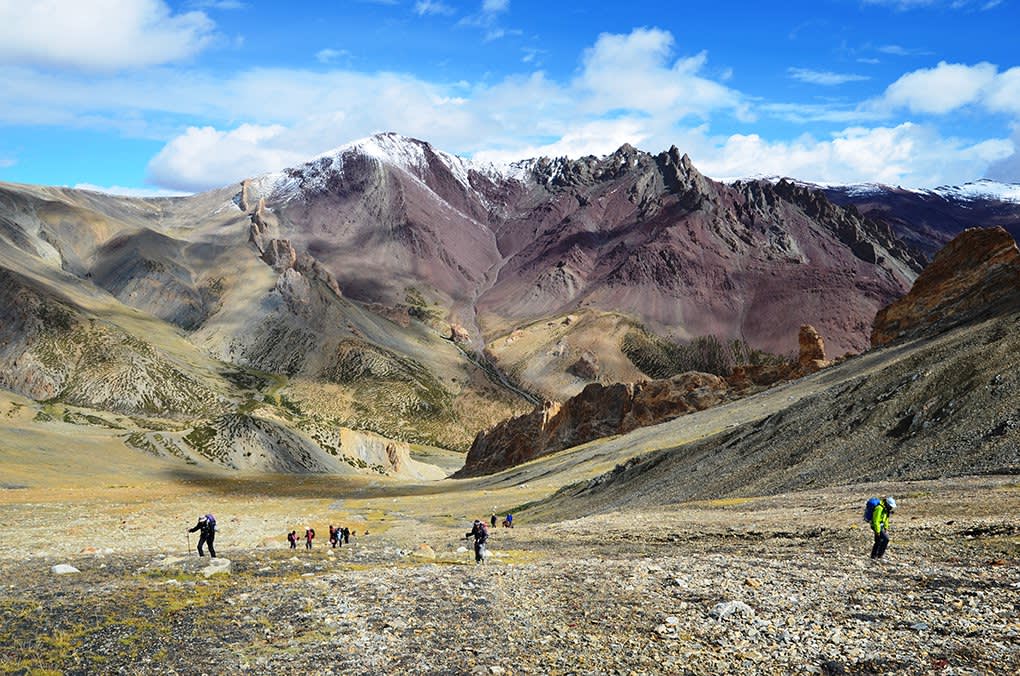 Trekking amidst the Ladakhi Himalaya
Trekking amidst the Ladakhi Himalaya
By contrast, trekking in Nepal offers a more varied pallet. Thick forests blanket the lower reaches of the mountains, giving way to brush, bare rock and finally icy pinnacles.
The Annapurna Circuit gives unparalleled views of these many levels, covering over 3,000m in altitude!
One of the first considerations is when is the best time to go? June – August is the main trekking season in Ladakh, and September – May for Nepal.
The main trekking season in Ladakh is short: only three months during high summer, although May and September are often also pleasant and the days are a little cooler. For much of the rest of the year the mountains are locked away in snow and ice.
Conversely, this time of year is a no-go in Nepal, where the raging monsoon season makes the trails far too perilous. Throughout the rest of the year, though, Nepal’s conditions are ideal for trekking, although there are distinct variations in climate from September to May.
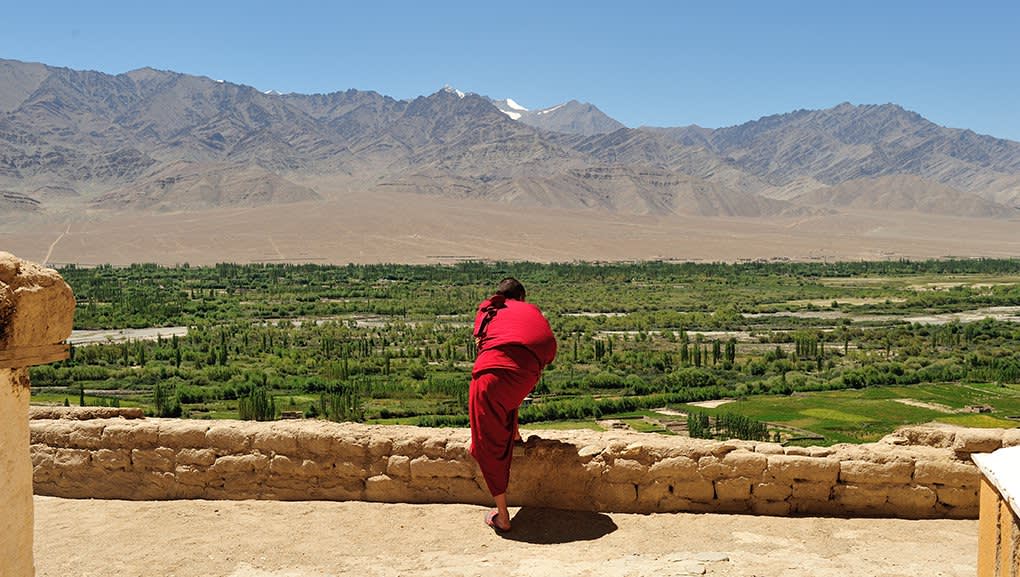 Monk overlooking Leh Valley, Ladakh
Monk overlooking Leh Valley, Ladakh A night spent beneath the infinite night sky and the glittering tapestry of stars… sounds good? Then trekking in Ladakh is the right choice. Being so remote and uninhabited, wilderness camping is the only accommodation available on most treks here, but that’s not such a bad thing – there’s no other way to sleep that brings you closer to nature.
Warm days make the Ladakhi summer ideal for camping. Our staff will take care of all the tents and chores, and local chefs whip up delicious meals every day, so you can just relax.
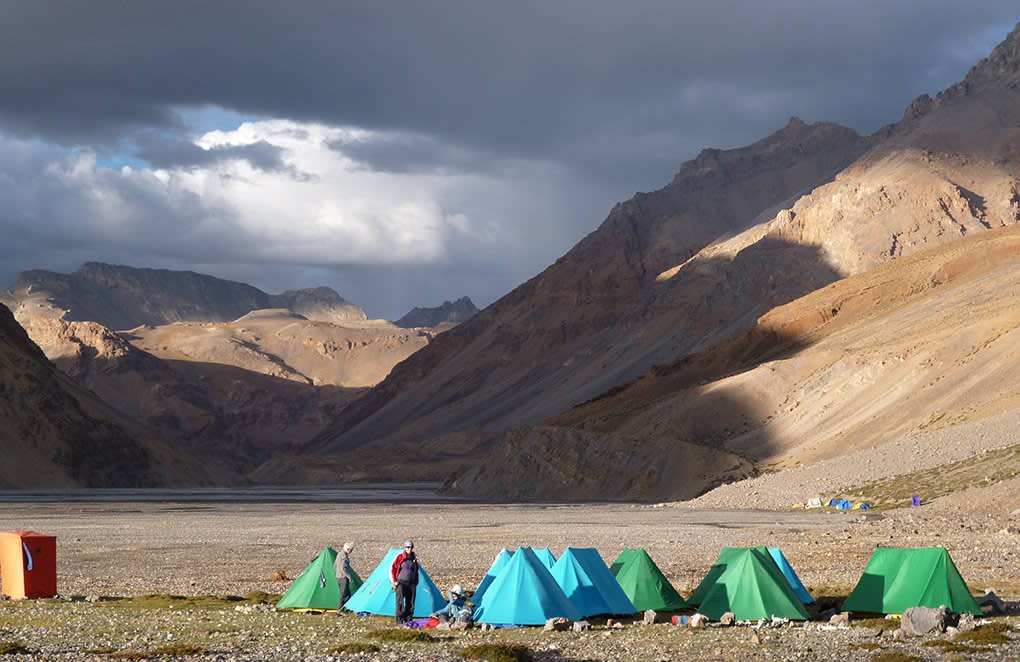 Ladakhi campsite
Ladakhi campsite
If you’re not a fan of camping, then trekking in Nepal is best for you. All of our Nepal treks utilise local teahouses, which although basic, offer a warm atmosphere as sherpas, villagers, guides and trekkers alike exchange stories, play card games and warm up over a hot drink in the evenings.
It’s a fantastic way to experience the charming Nepali culture and to sample some traditional dishes, like dal bhat and momos.
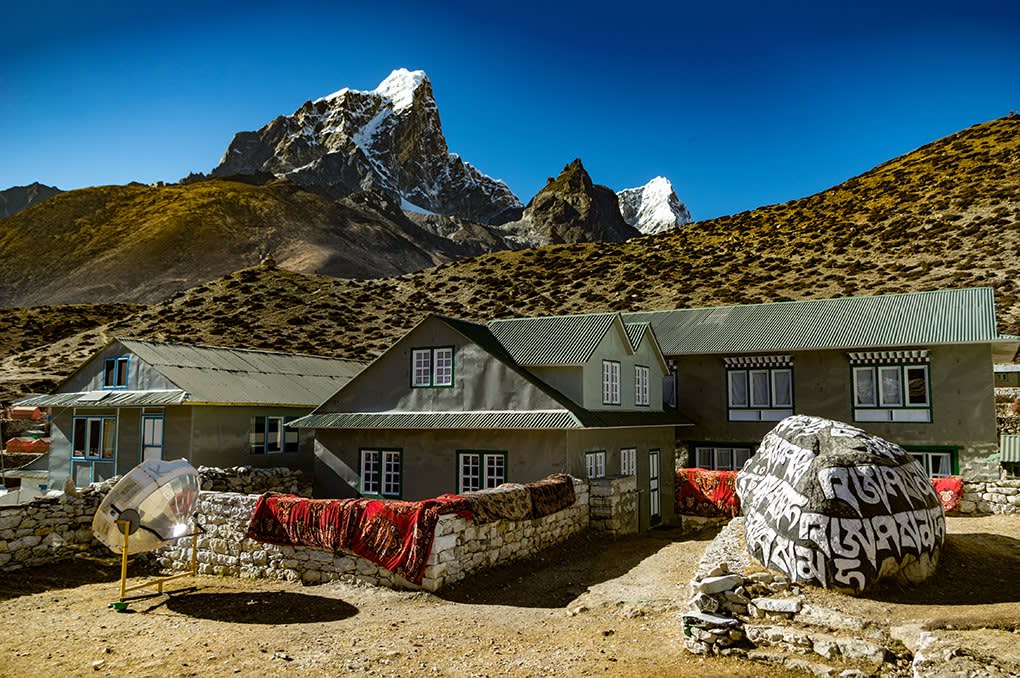 Dingboche Tea House, Nepal
Dingboche Tea House, Nepal Isolated, inaccessible and sparsely populated, Ladakh is certainly the more esoteric choice. You’ll encounter few others while you traverse the Ladakhi Himalaya – it’s just you and the mountains, away from it all, relishing the peace and quiet, above the world.
The occasional villages you do encounter at the lower reaches of the treks comprise of only a few mudbrick houses, but the Ladakhi people are hospitable and will often invite you in to try a butter tea. Much of the terrain underfoot resembles ‘sheep trails’ – there are no substantial man-made paths, cobbled trails or stone steps.
Nepal is different. This is the region for people who love people. The many villages you’ll pass through and the warm, friendly locals you’ll meet – as well as your fellow adventurers – give you a real sense of community and connection. The trails are generally more substantial than in Ladakh, well-marked, with numerous stone staircases and, particularly in the Everest region, many suspension bridges over rivers.
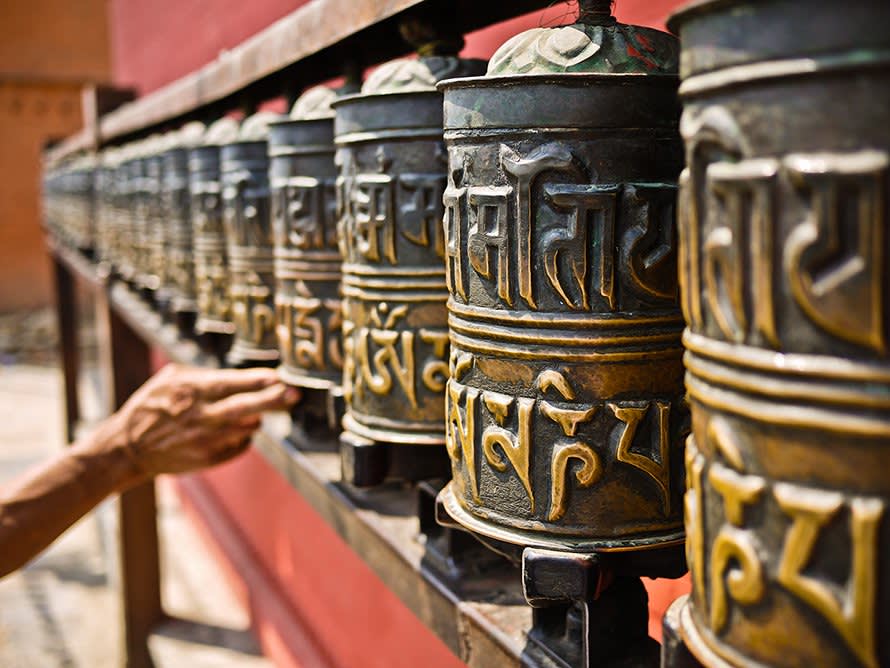 Nepali Prayer Wheels
Nepali Prayer Wheels Put simply, there’s a significant difference in footfall between these two regions. Ladakh is off-the-beaten-path and isolated, which results in much quieter trails, whereas Nepal’s iconic status, larger population and greater connection to the outside world bring in more trekkers.
So, there you have it. Which sounds more you? Many adventurers will visit both!
If you’ve decided which area suits you, why not check out some of our adventures below?



